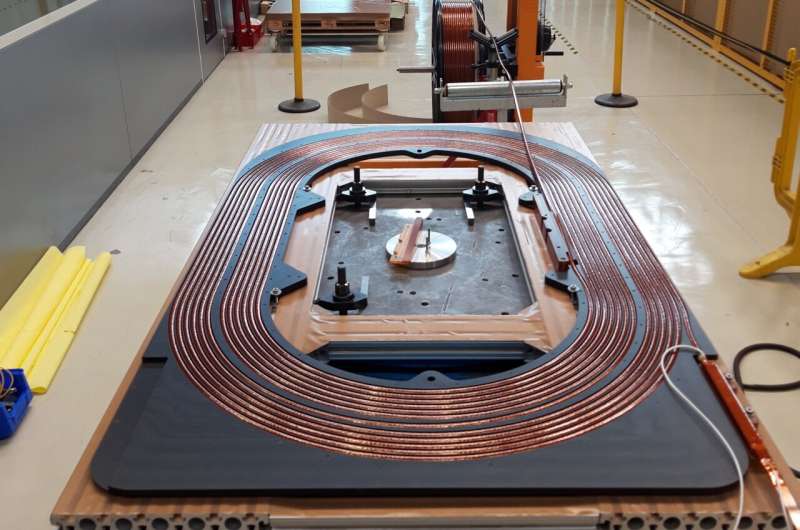The prototype magnet’s coil is crafted from superconducting magnesium diboride cables, marking a significant step towards energy efficiency in electromagnets. CERN’s scientists are at the forefront of cutting-edge research, exploring innovative solutions to reduce energy consumption.
Recently, a team at CERN successfully tested a magnet coil demonstrator that promises to lower power consumption in specific experiments. This coil, composed of magnesium diboride (MgB2) superconducting cables, is crucial for the High-Luminosity LHC (HL-LHC), the next-generation successor to the LHC. Housed in a low-carbon steel magnetic yoke, the coil adopts a superferric configuration to concentrate field lines effectively.
Designed for the SHiP experiment, scheduled for commissioning in 2031, this magnet aims to detect faintly interacting particles. One of the detector’s magnets must generate a 0.5-tesla field within a massive volume measuring 6 meters in height and 4 meters in width and depth. Traditional resistive electromagnets would consume over one megawatt of electrical power, posing sustainability challenges.
The innovative use of superconductors like magnesium diboride, which operate without resistance and energy loss, presents a solution. Unlike the LHC magnets based on a niobium-titanium alloy requiring ultra-low temperatures, magnesium diboride cables can function at -253 °C (20 Kelvin) with gaseous helium cooling, offering improved thermodynamic efficiency.
While unsuitable for high-field accelerator magnets like those in the LHC, magnesium diboride cables are ideal for magnets like SHiP with moderate fields. The successful testing of a 1-meter-long demonstrator coil last September, cooled with gaseous helium to 20-30 Kelvin, signals promising advancements in this technology for both CERN and industrial applications.
Published on 2024-07-05 13:15:03
Original source: phys.org
